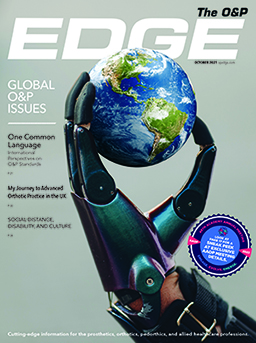MIT to Establish New Bionics Center
September 28, 2021
The Massachusetts Institute of Technology (MIT) will launch a new bionics center made possible by a $24 million gift from philanthropist Lisa Yang. The interdisciplinary research center, the K. Lisa Yang Center for Bionics, aims to mitigate disability through technologies that marry human physiology with electromechanics.
Biologic design cues are being used to create revolutionary technologies that restore the function of bodies affected by injury, aging, or disease—from prosthetic limbs that effortlessly navigate tricky terrain to digital nervous systems that move the body after a spinal cord injury.
With the establishment of the center, MIT will advance the development and deployment of enabling technologies that communicate directly with the nervous system to mitigate a broad range of disabilities. The center's scientists, clinicians, and engineers will work together to create, test, and disseminate bionic technologies that integrate with both the body and mind.
"The K. Lisa Yang Center for Bionics will provide a dynamic hub for scientists, engineers, and designers across MIT to work together on revolutionary answers to the challenges of disability," said L. Rafael Reif, MIT's president.
To develop prosthetic limbs that move as the brain commands or optical devices that bypass an injured spinal cord to stimulate muscles, bionic developers must integrate knowledge from a diverse array of fields—from robotics and artificial intelligence to surgery, biomechanics, and design.
The center will be led by Hugh Herr, PhD, a professor of media arts and sciences at MIT's Media Lab, and Ed Boyden, PhD, the Y. Eva Tan Professor of Neurotechnology, a professor of biological engineering, brain and cognitive sciences, and media arts and sciences, and an investigator at MIT's McGovern Institute and the Howard Hughes Medical Institute.
Herr, who has bilateral transtibial amputations, is a pioneer in the development of bionic limbs to improve mobility for those with physical disabilities. "The world profoundly needs relief from the disabilities imposed by today's nonexistent or broken technologies. We must continually strive towards a technological future in which disability is no longer a common life experience," Herr said.
One of the research center's priorities during the first four years is to focus on bionic limb reconstruction to restore natural, brain-controlled movements as well as the sensation of touch and proprioception from bionic limbs.
Editor's note: This story was adapted from materials provided by MIT.






-
-
-
-
CONTACT US